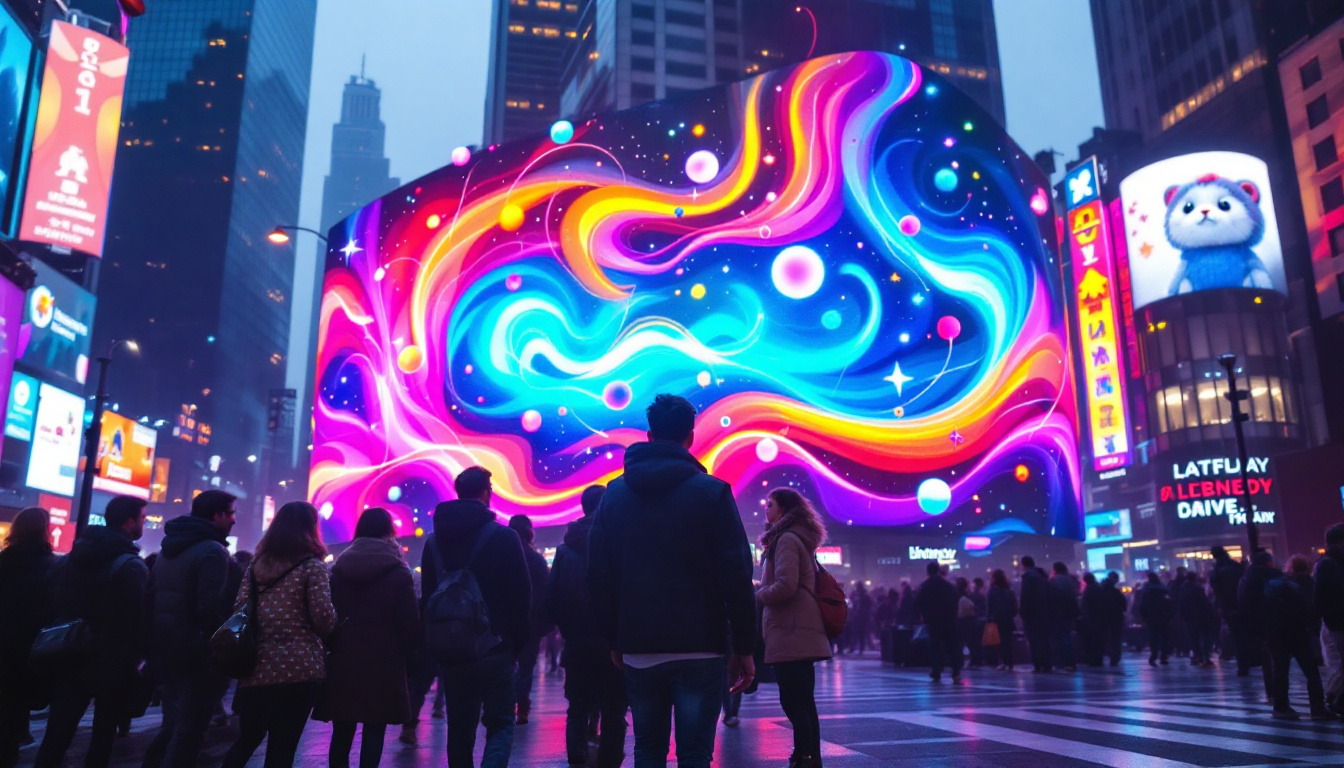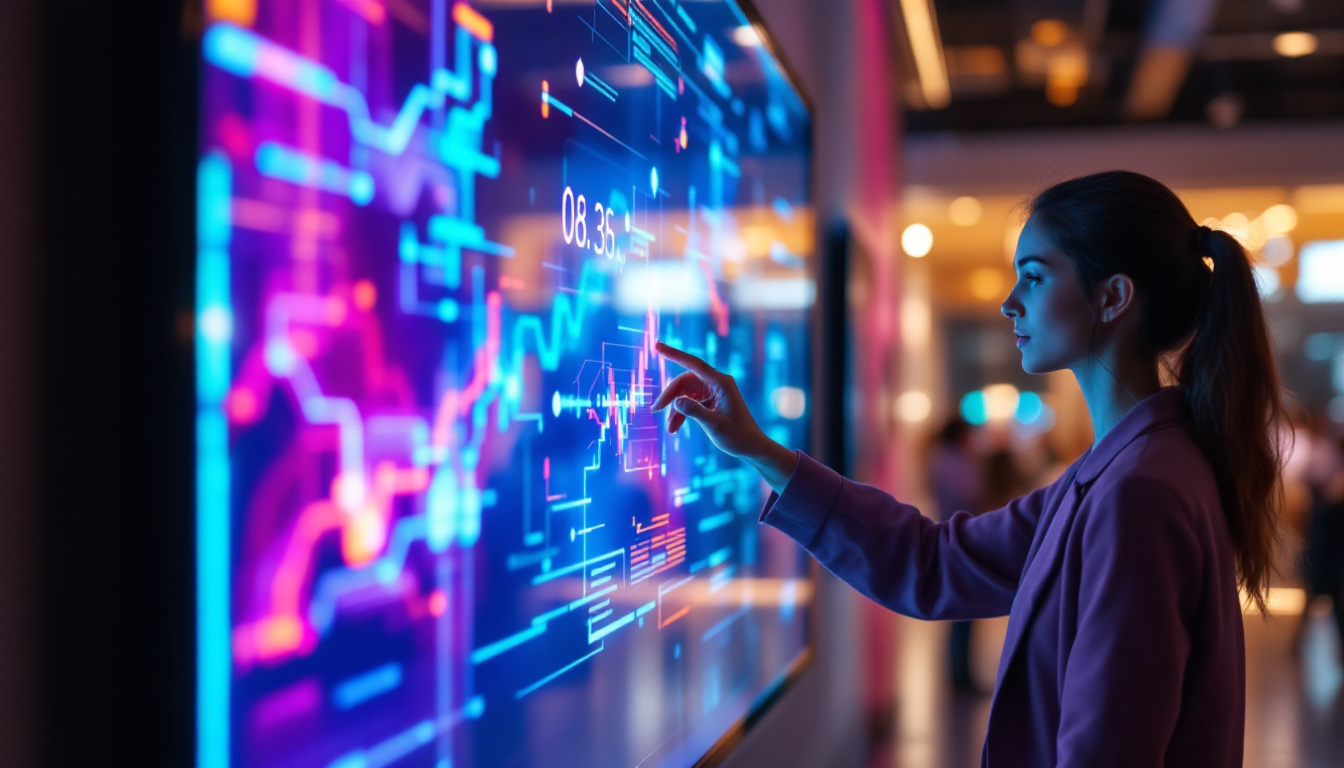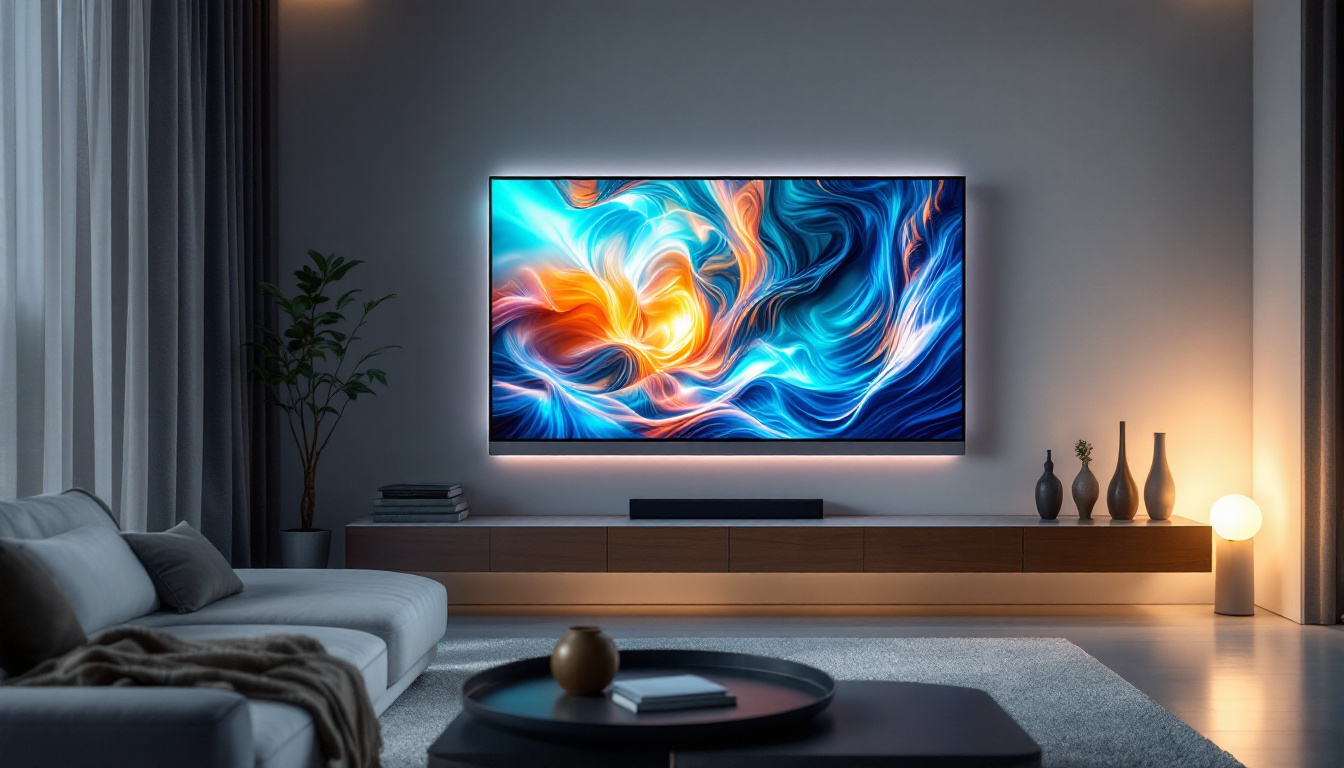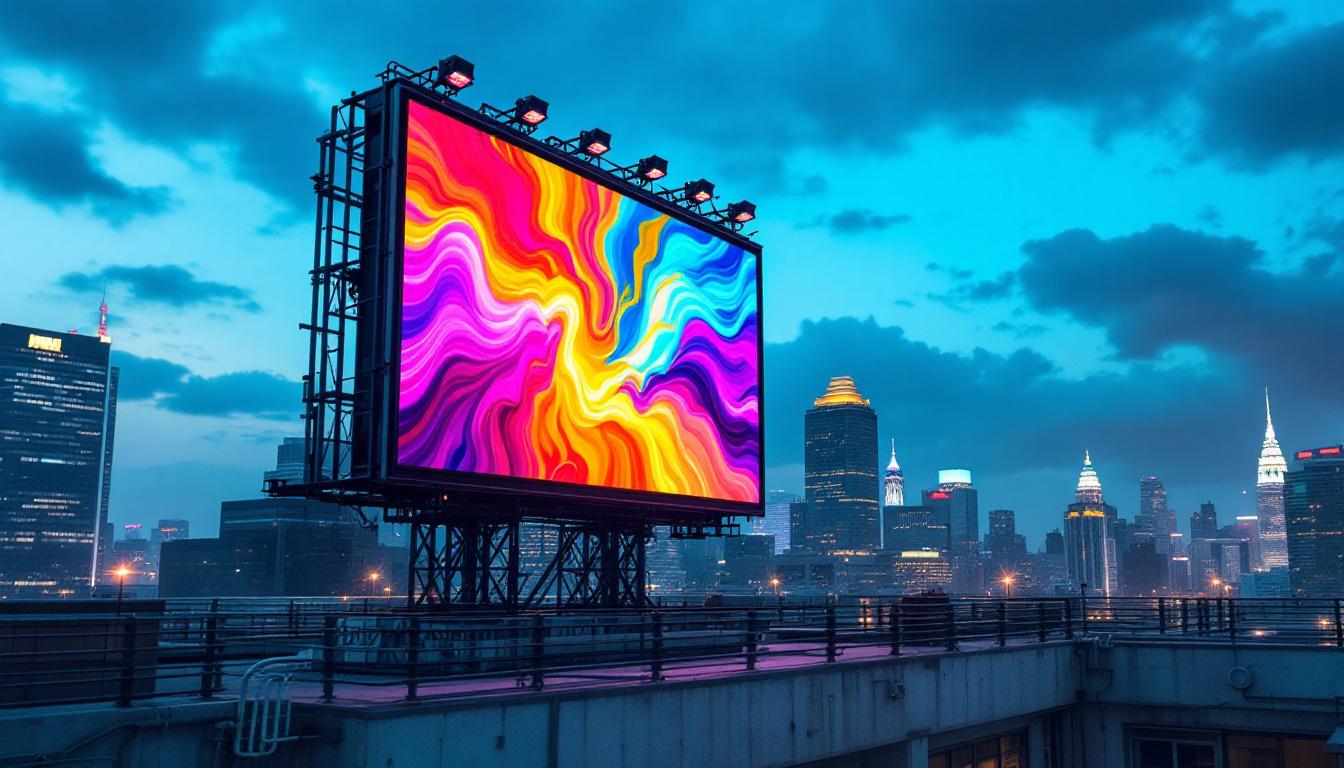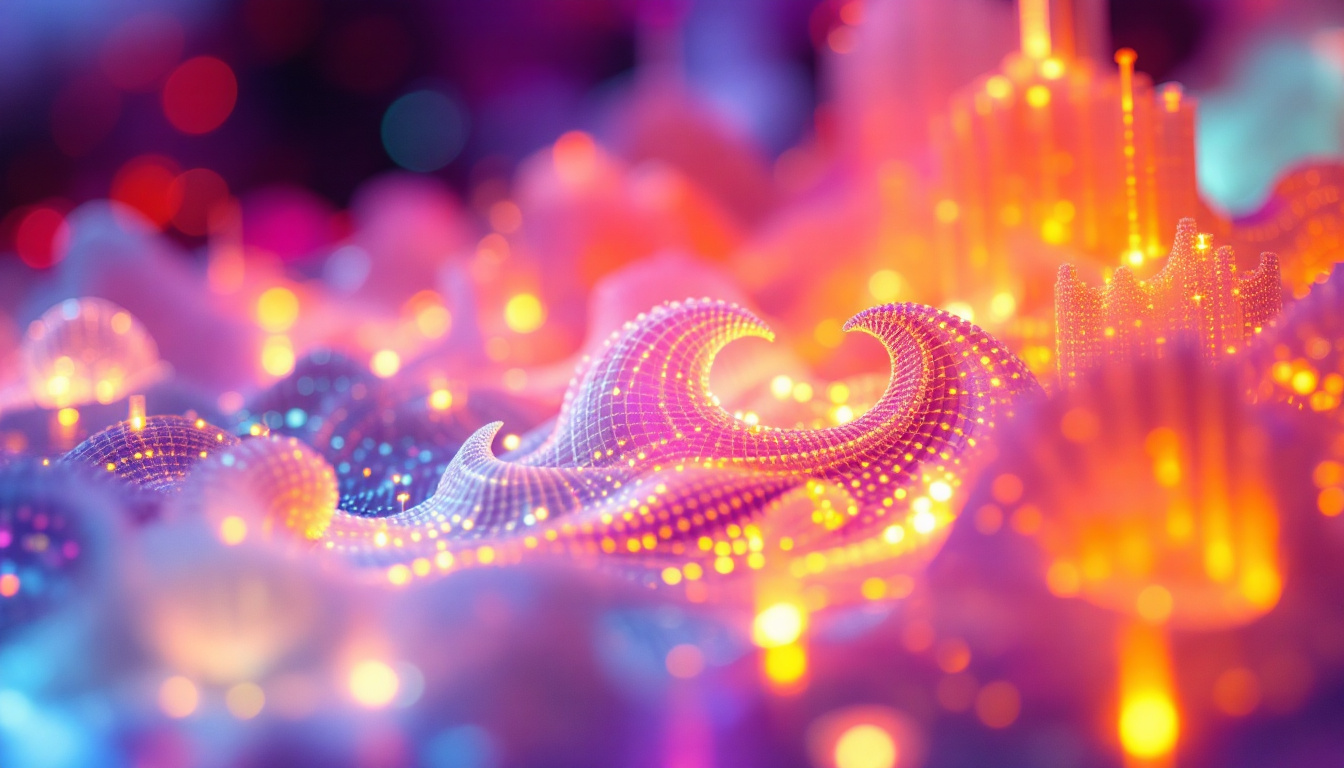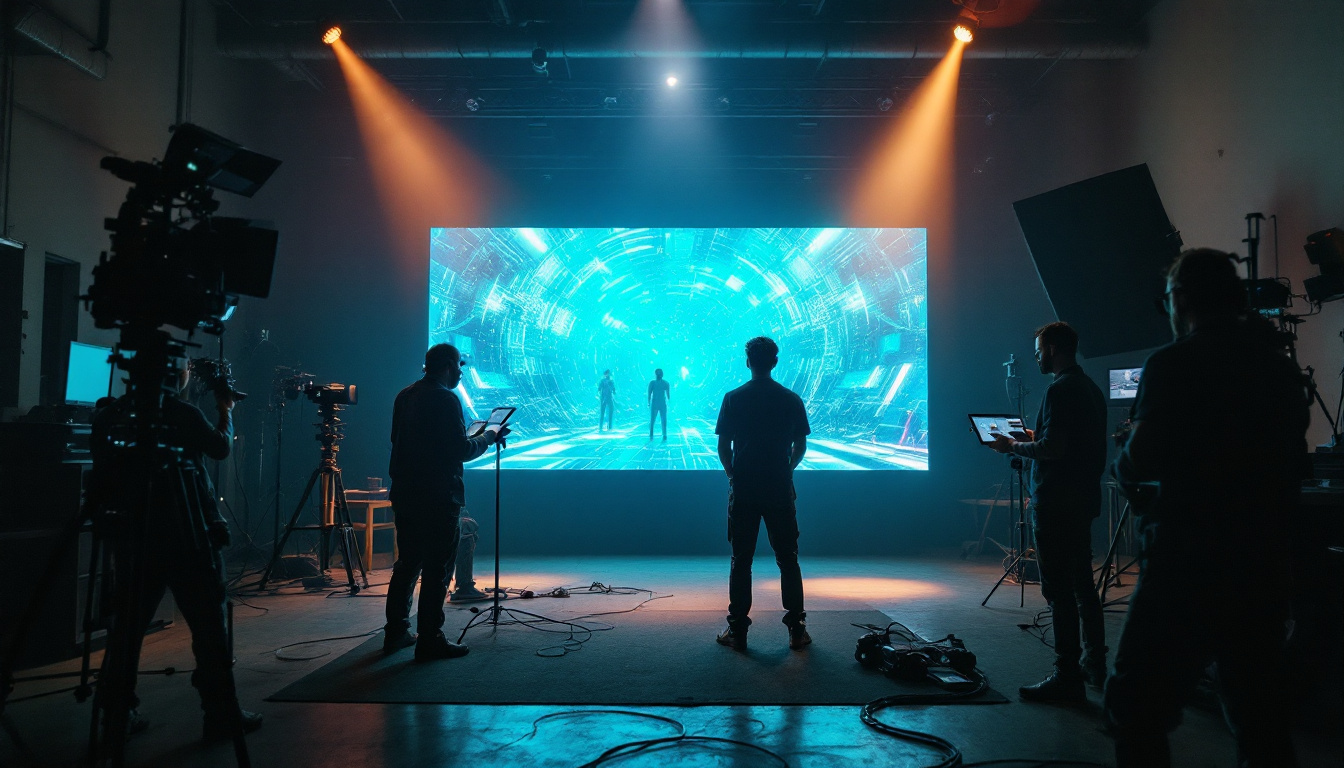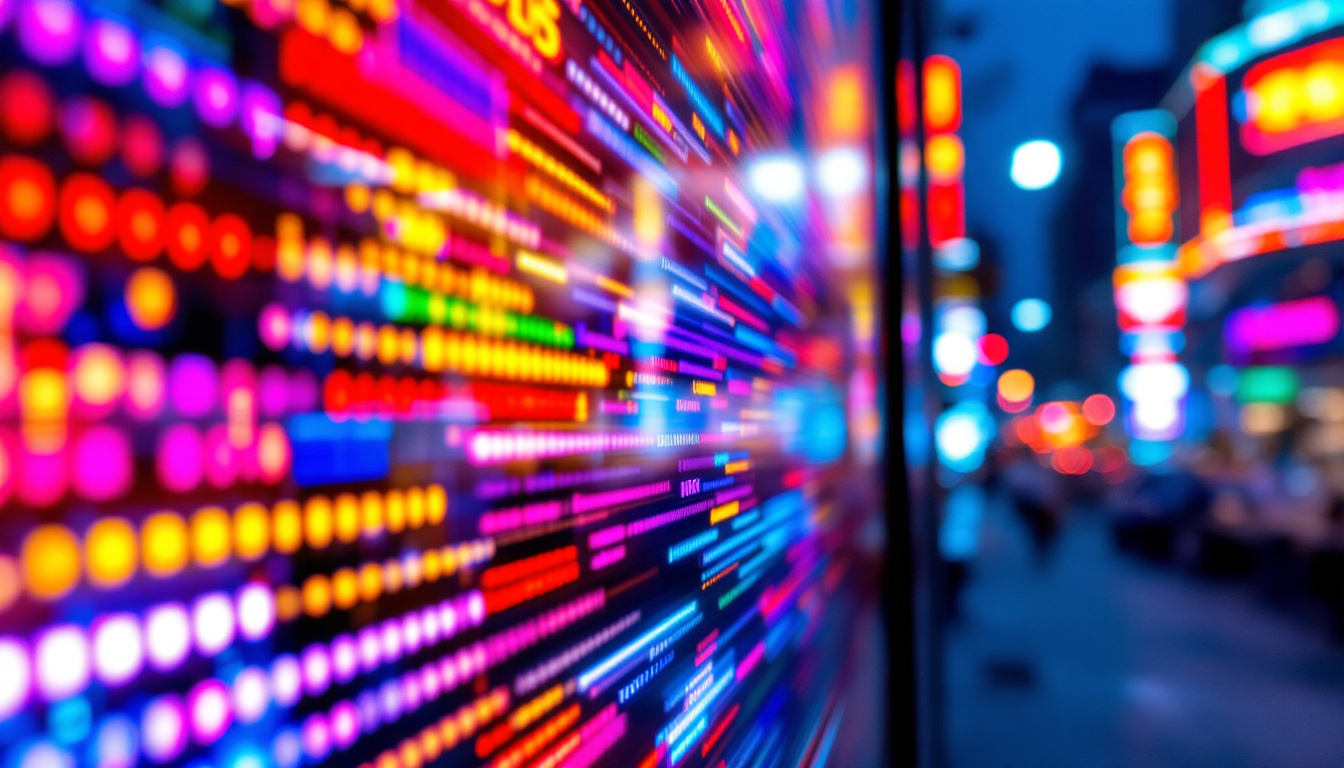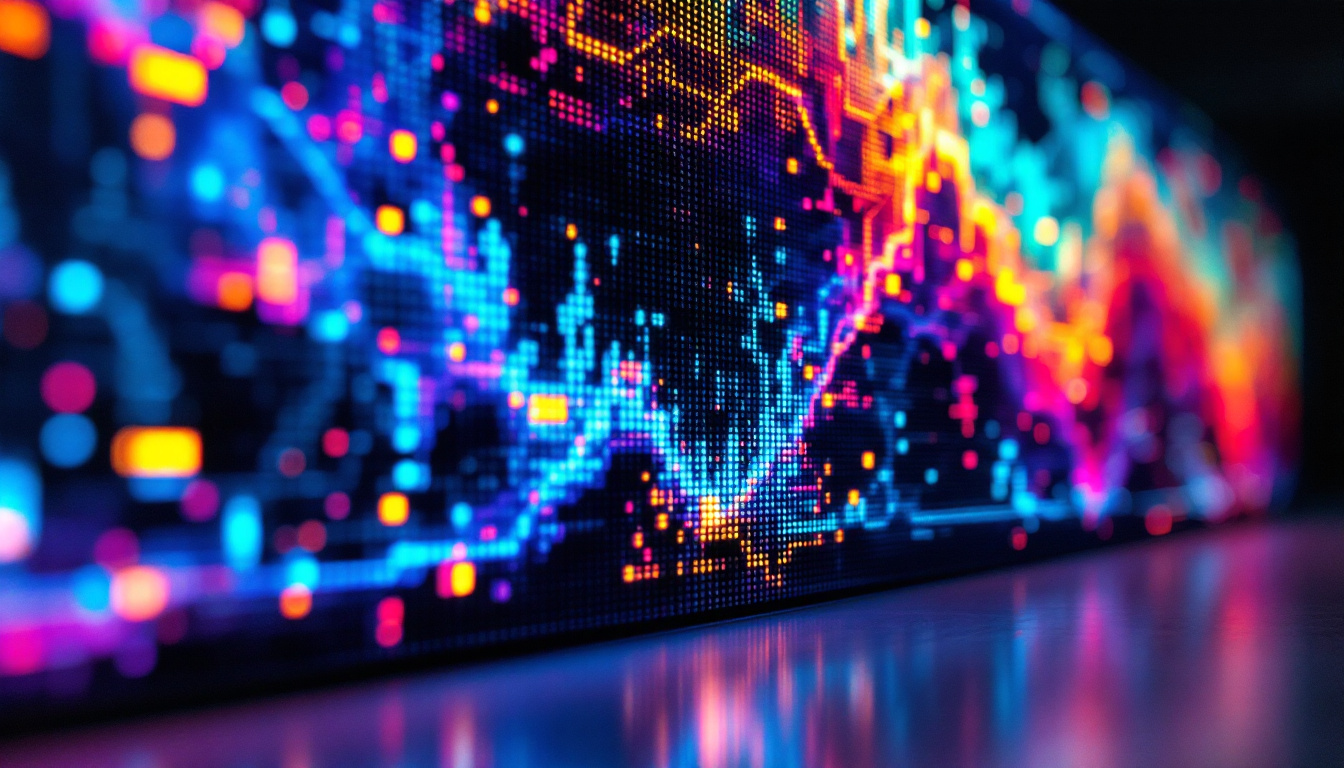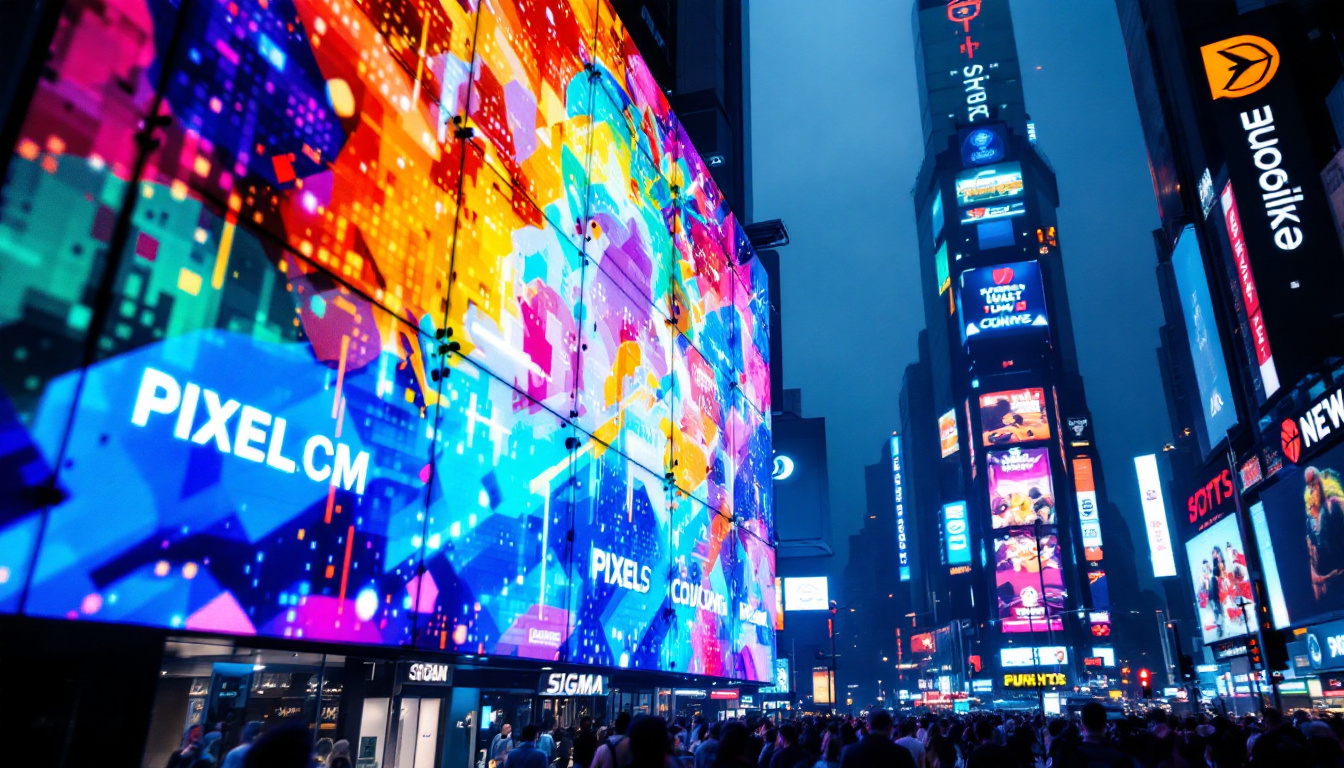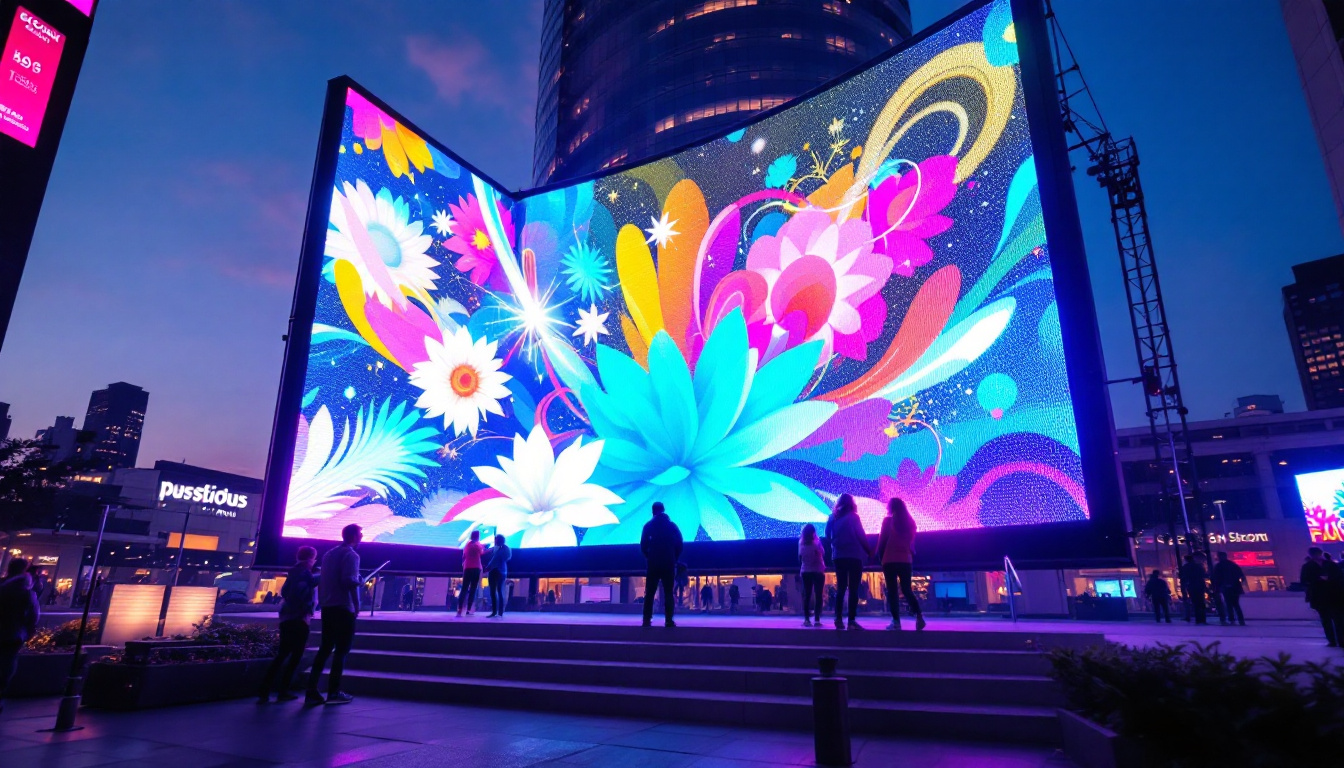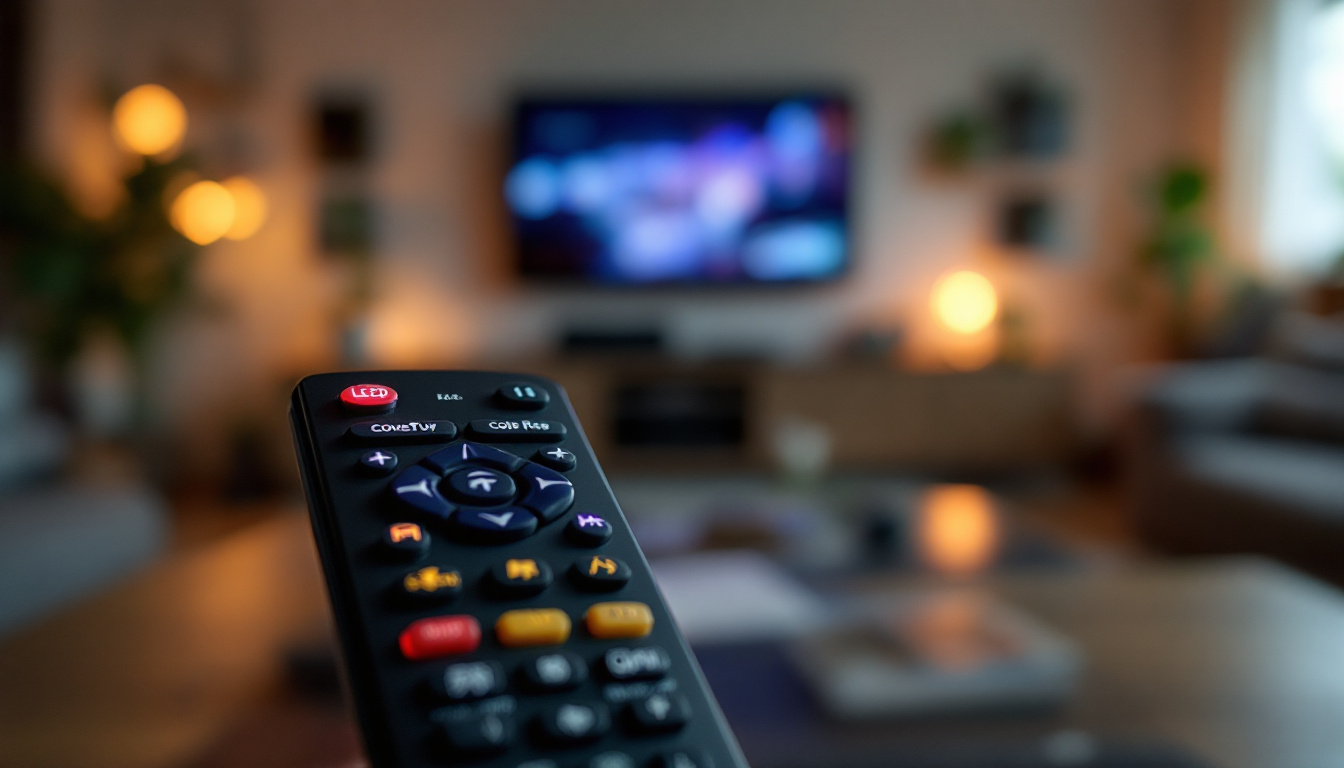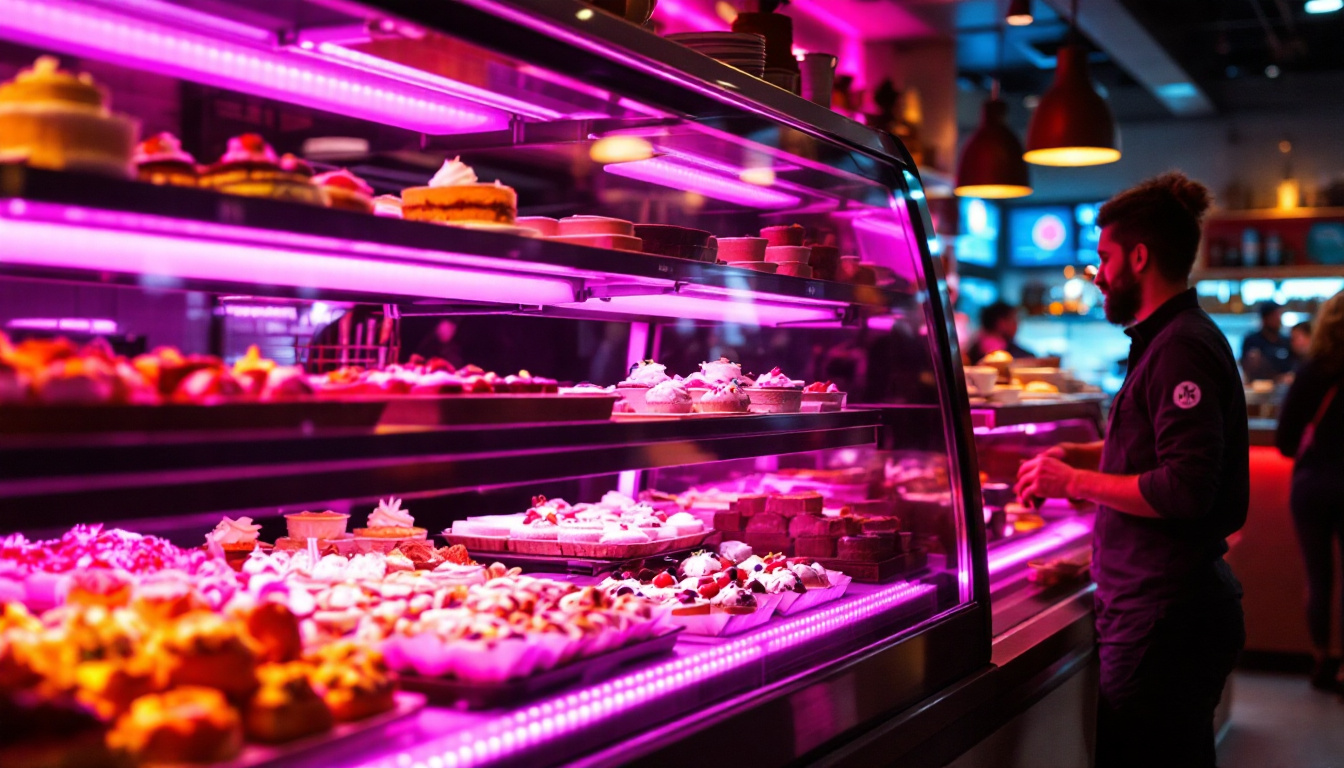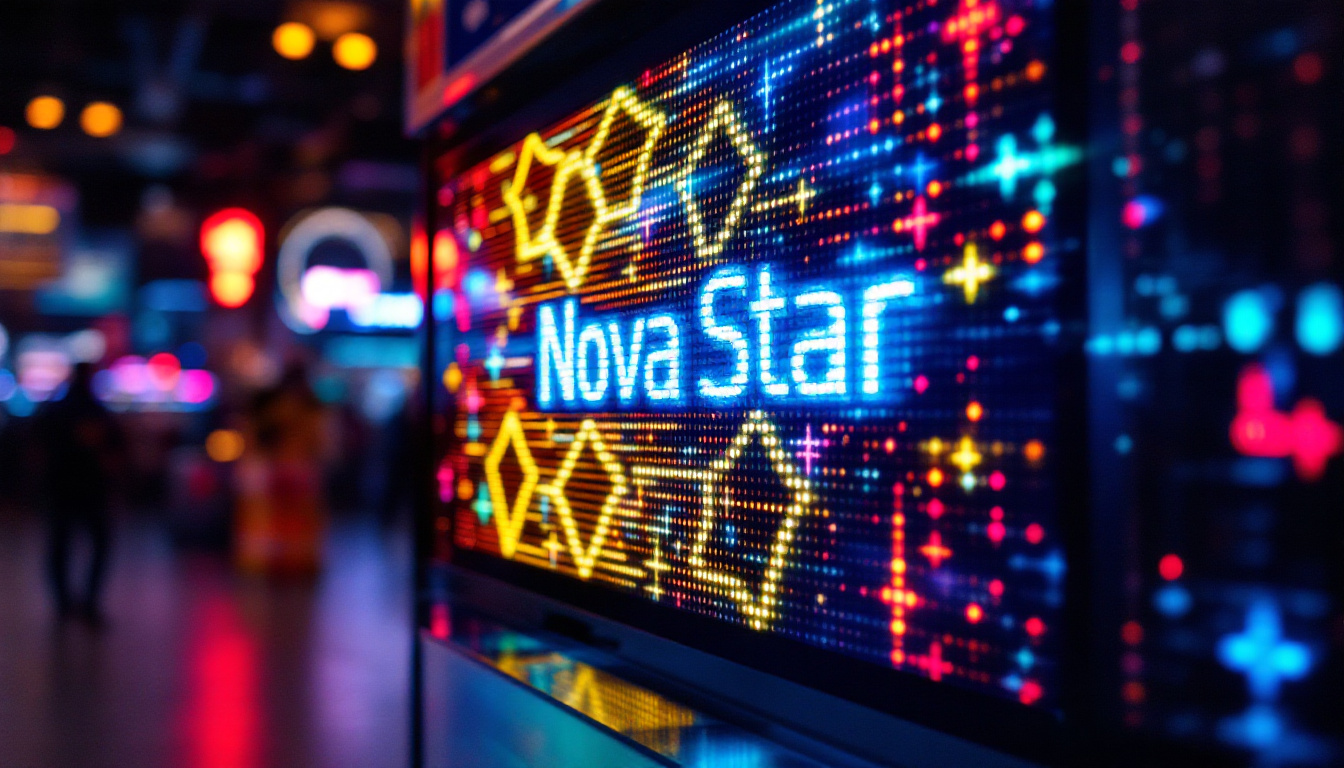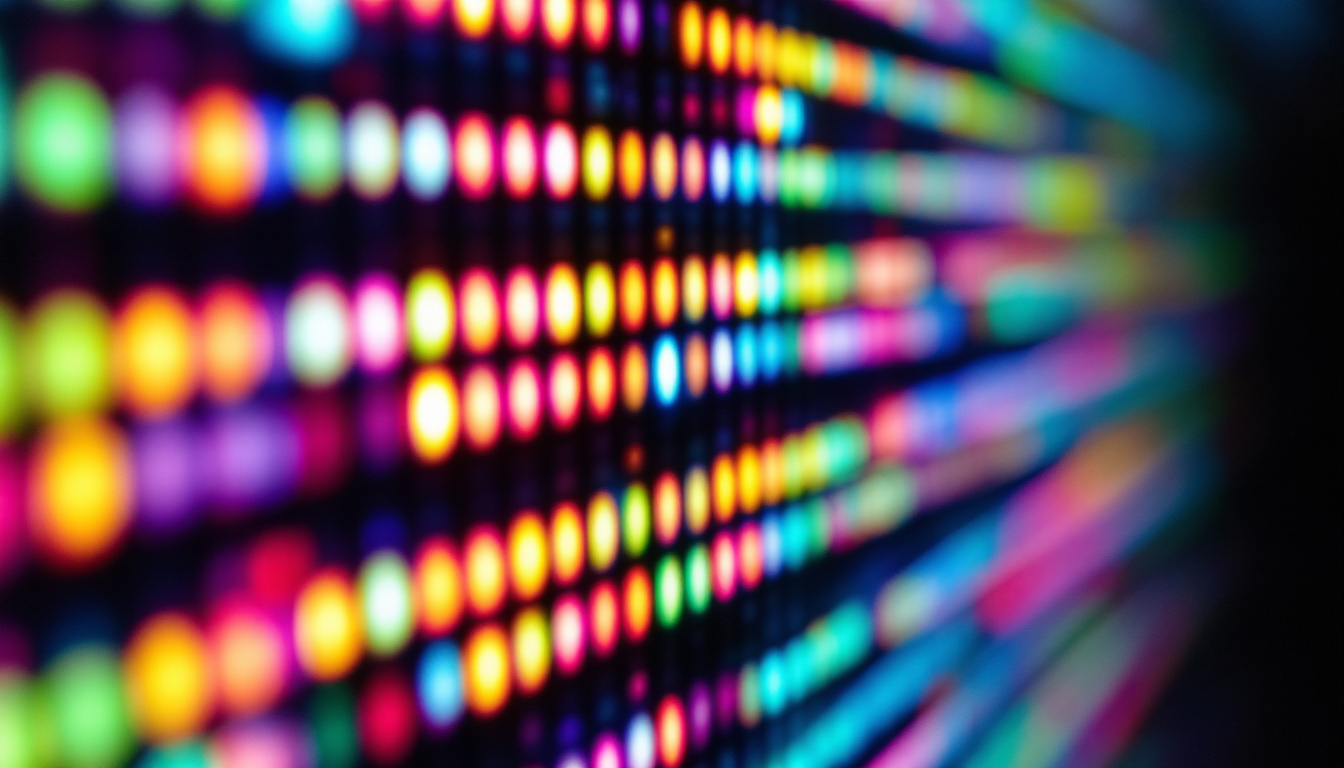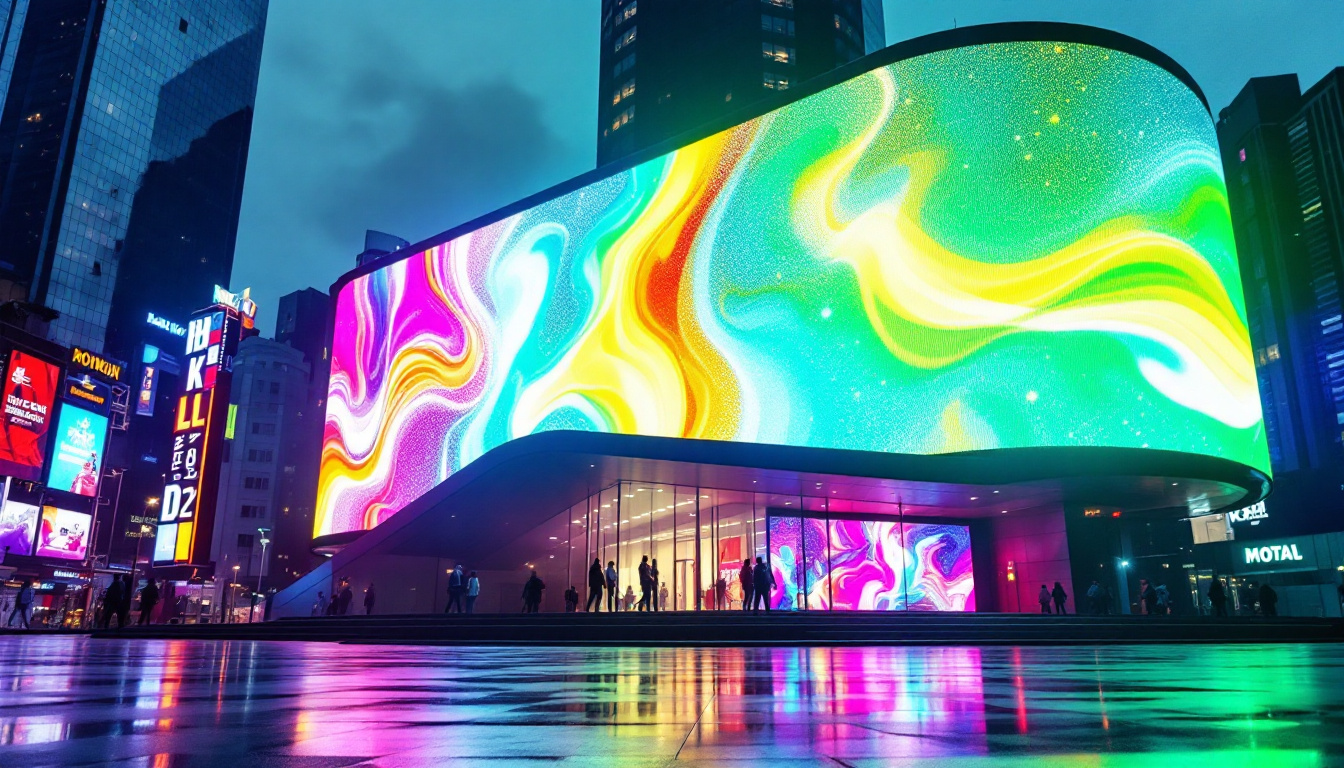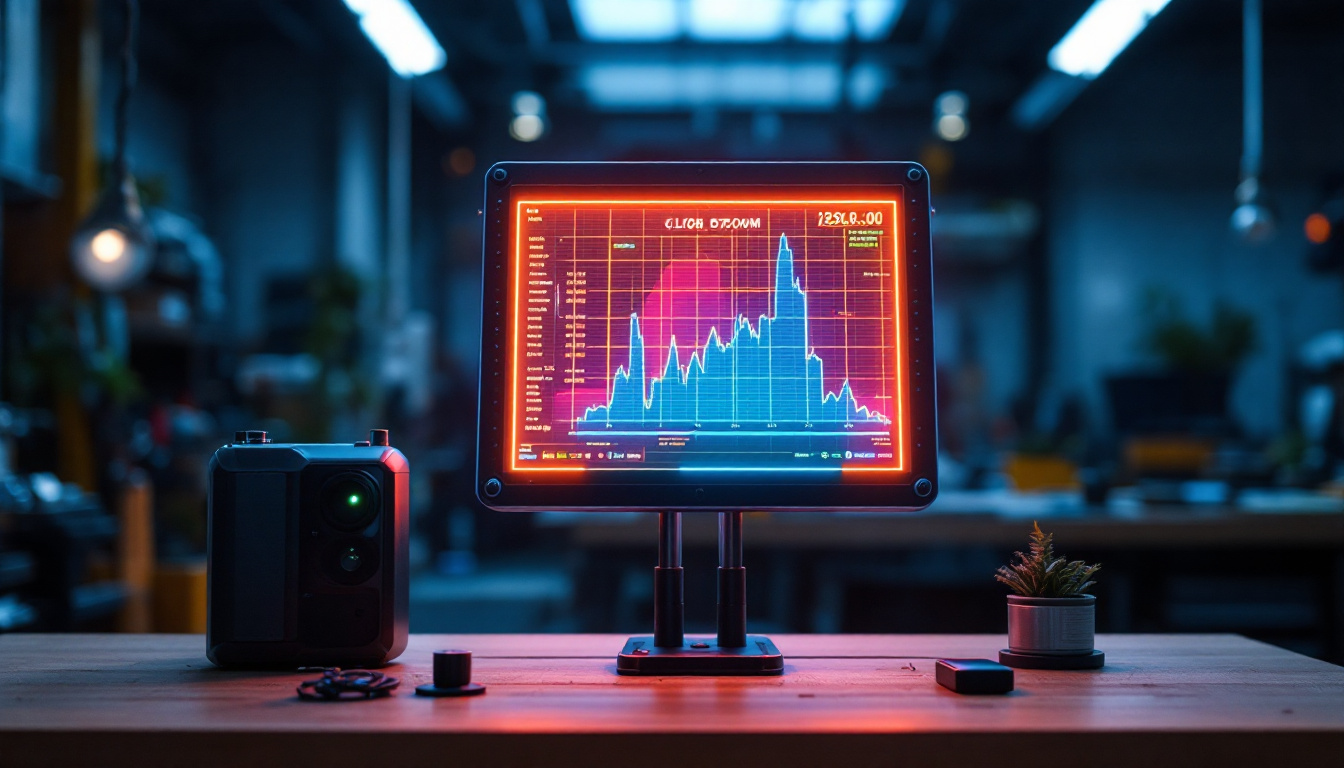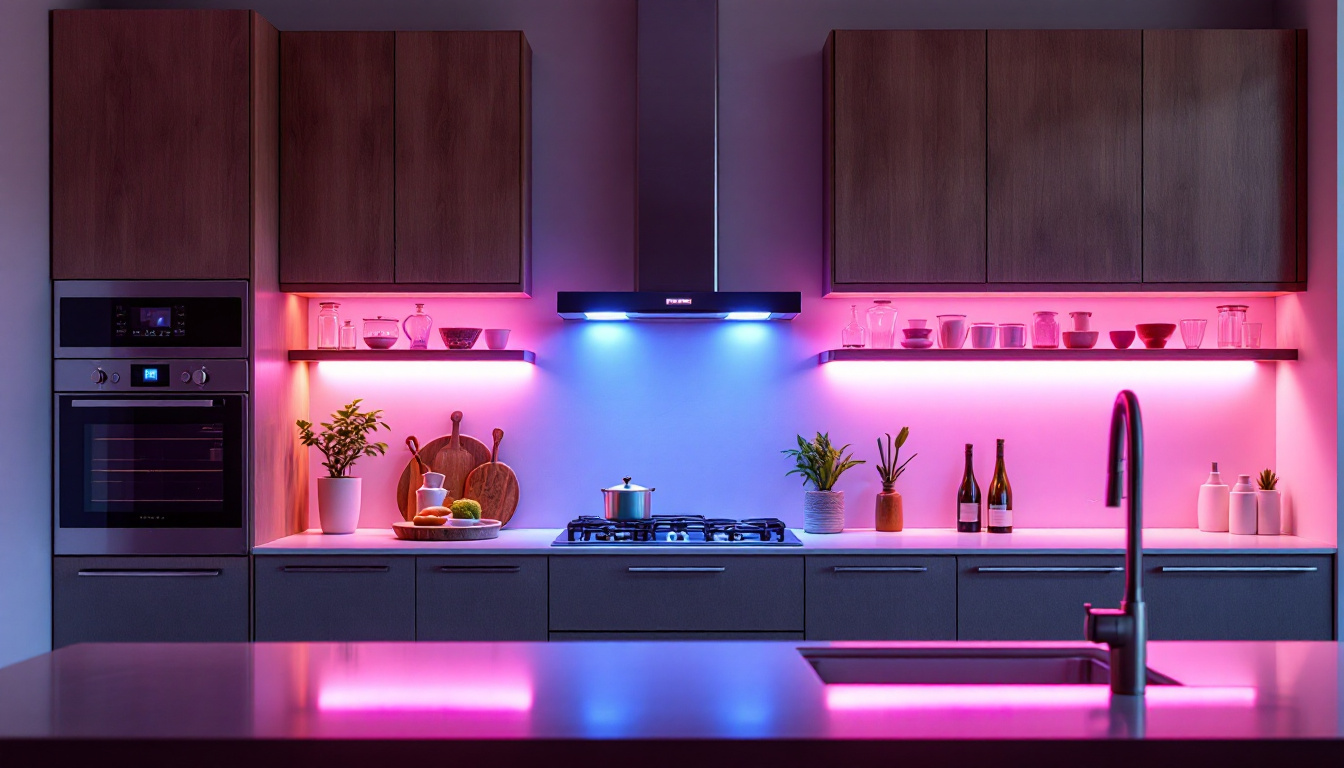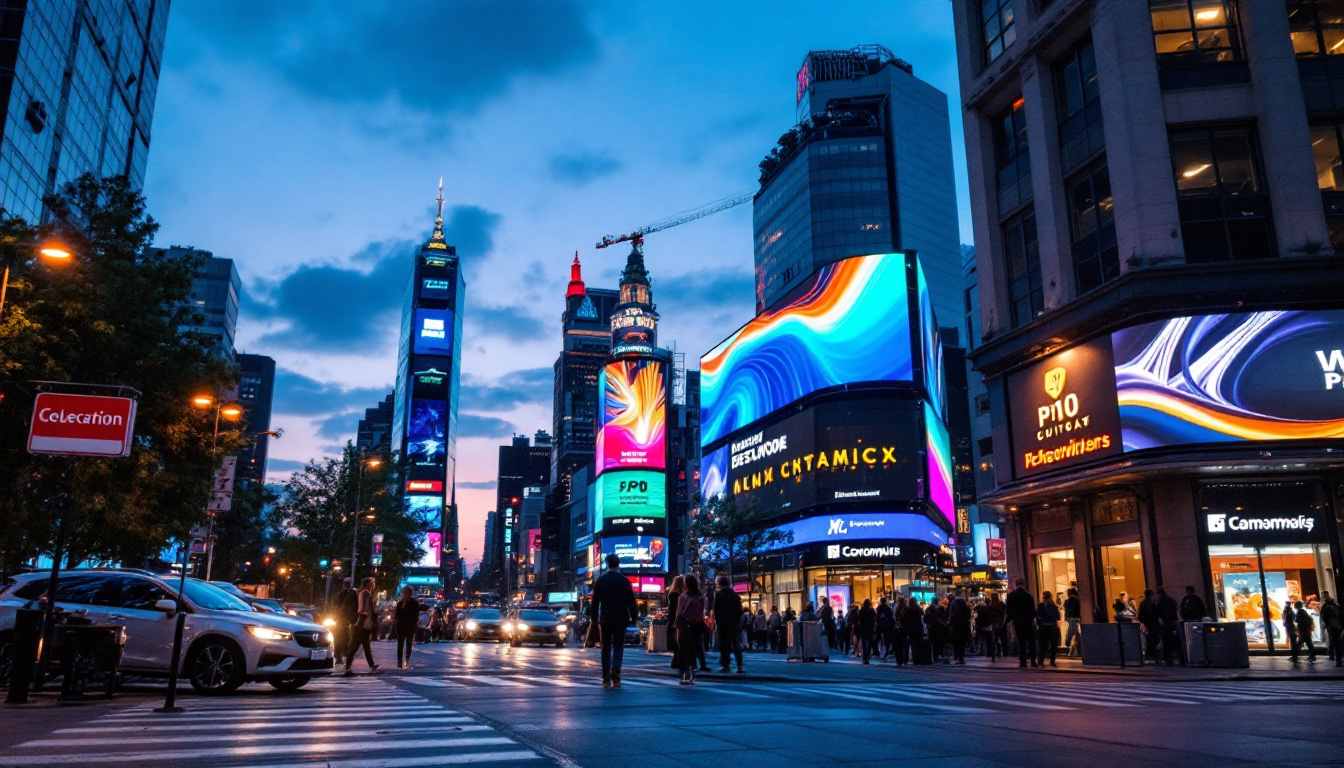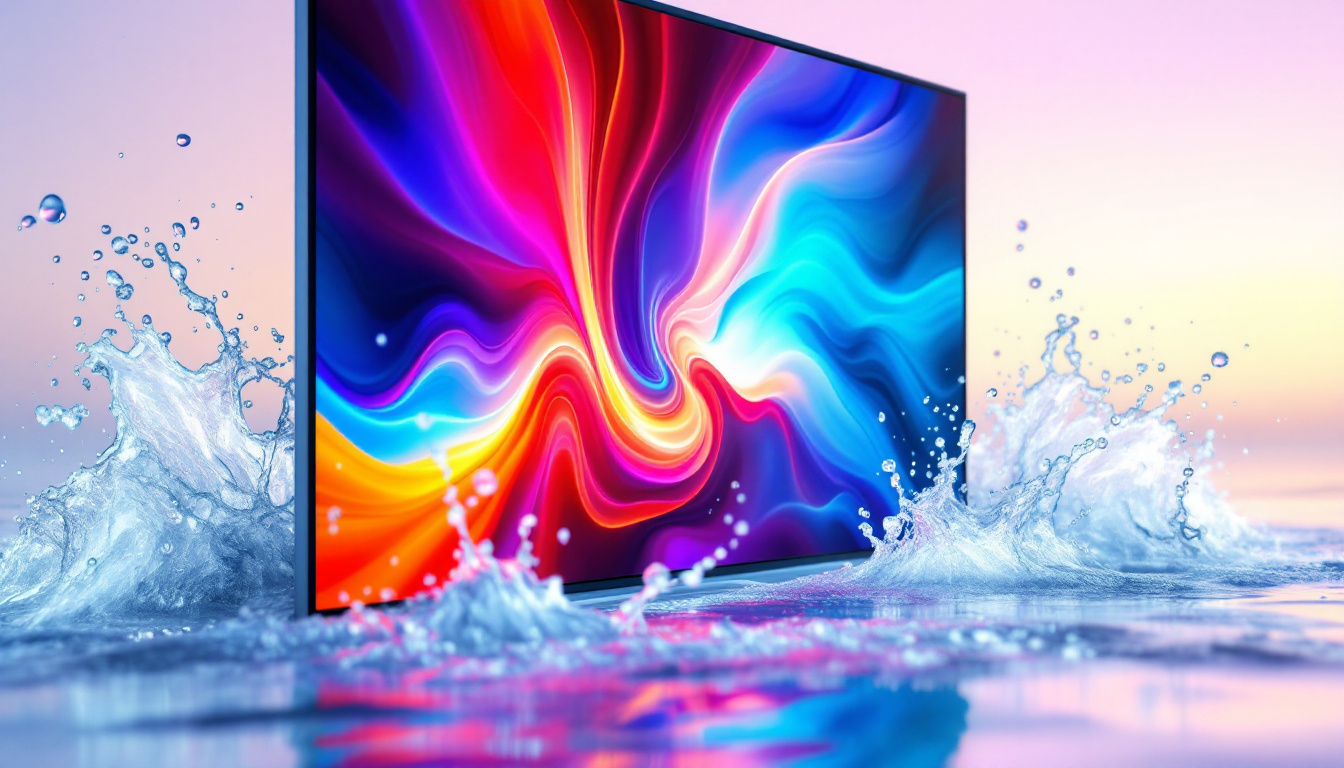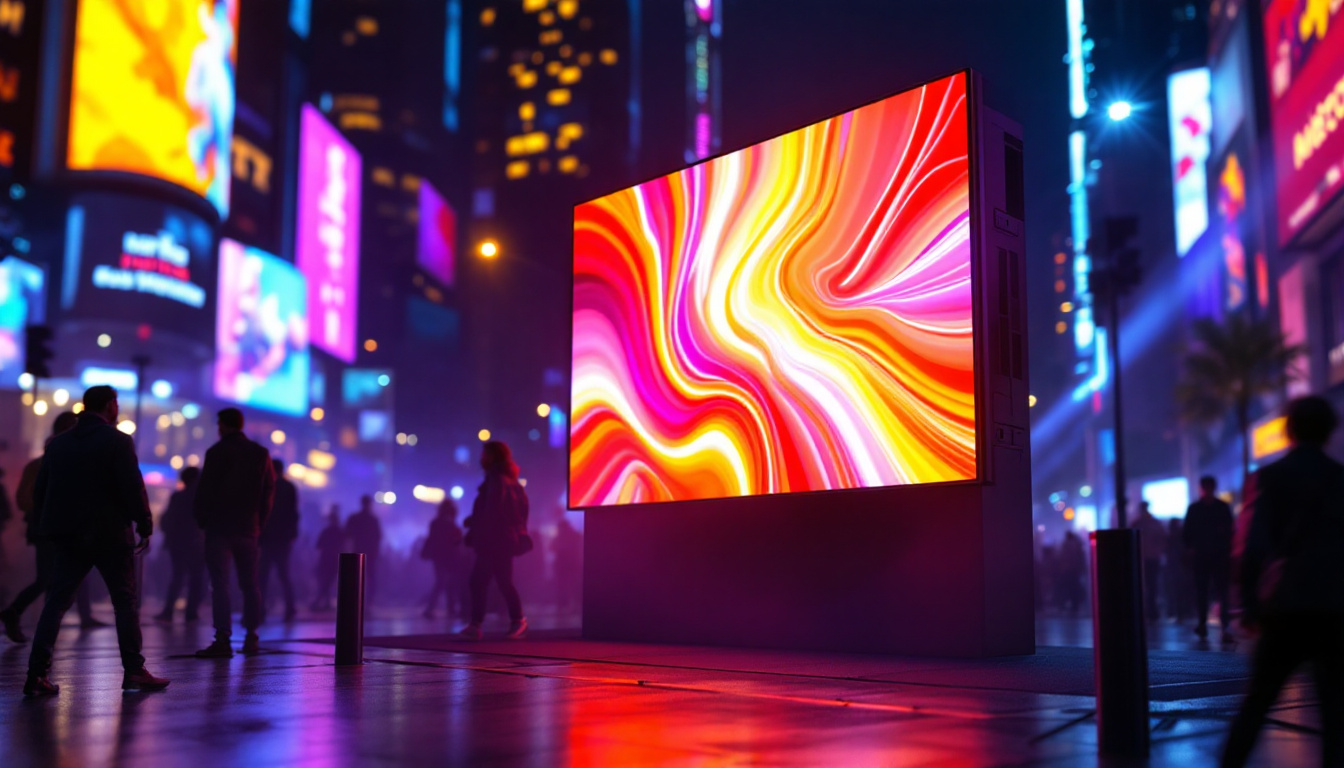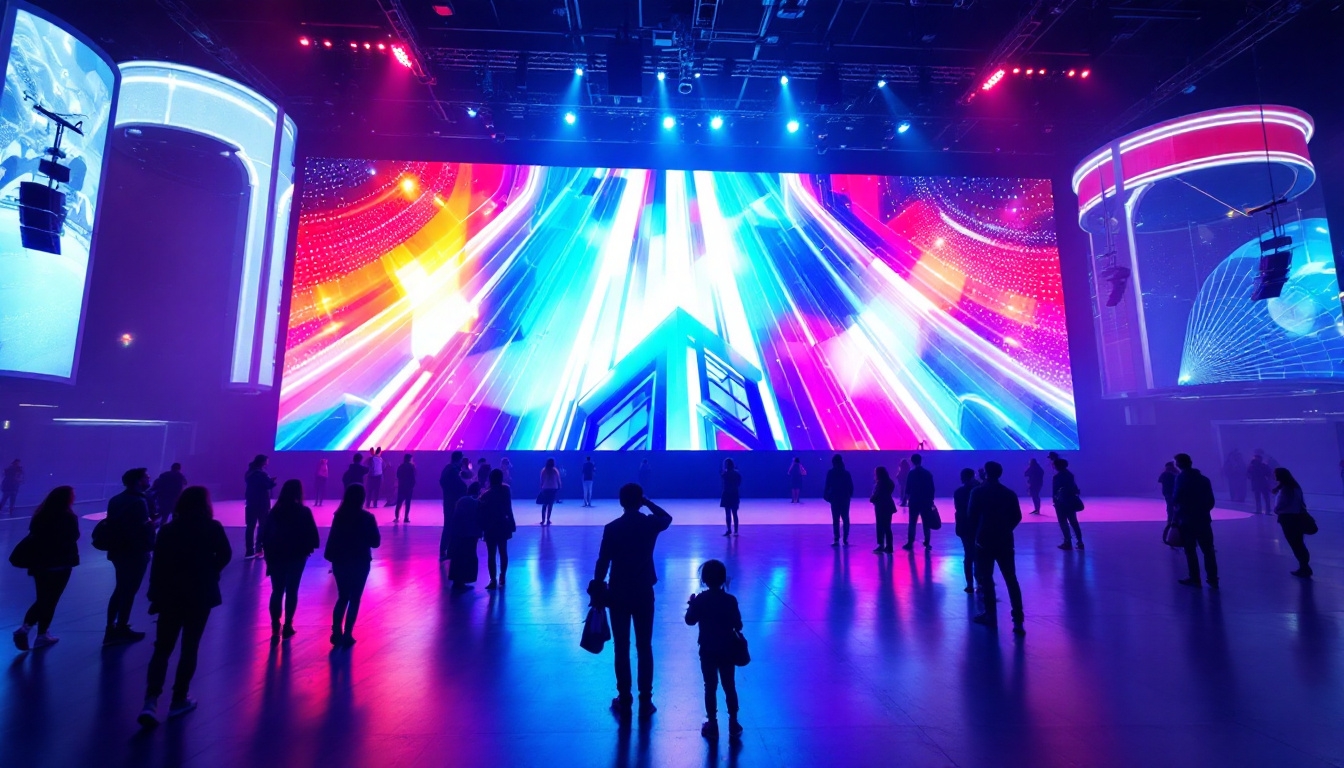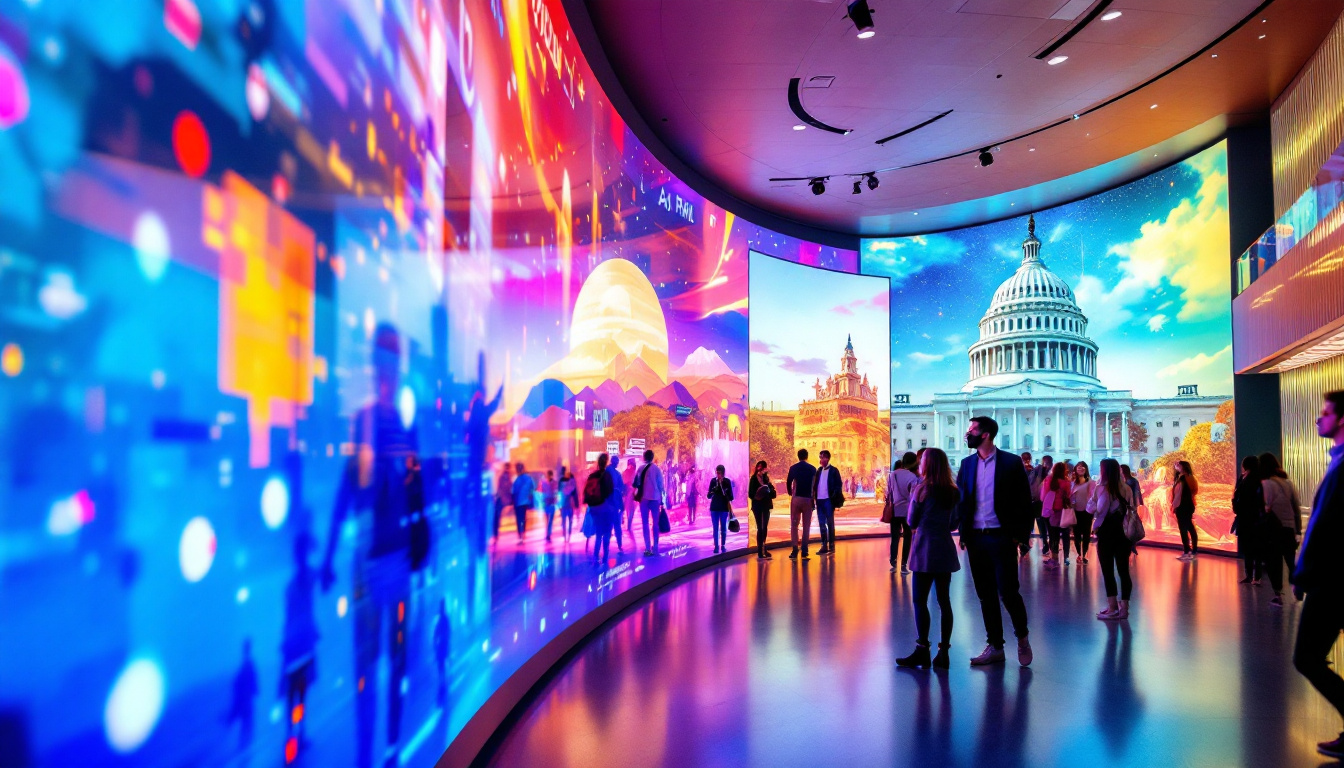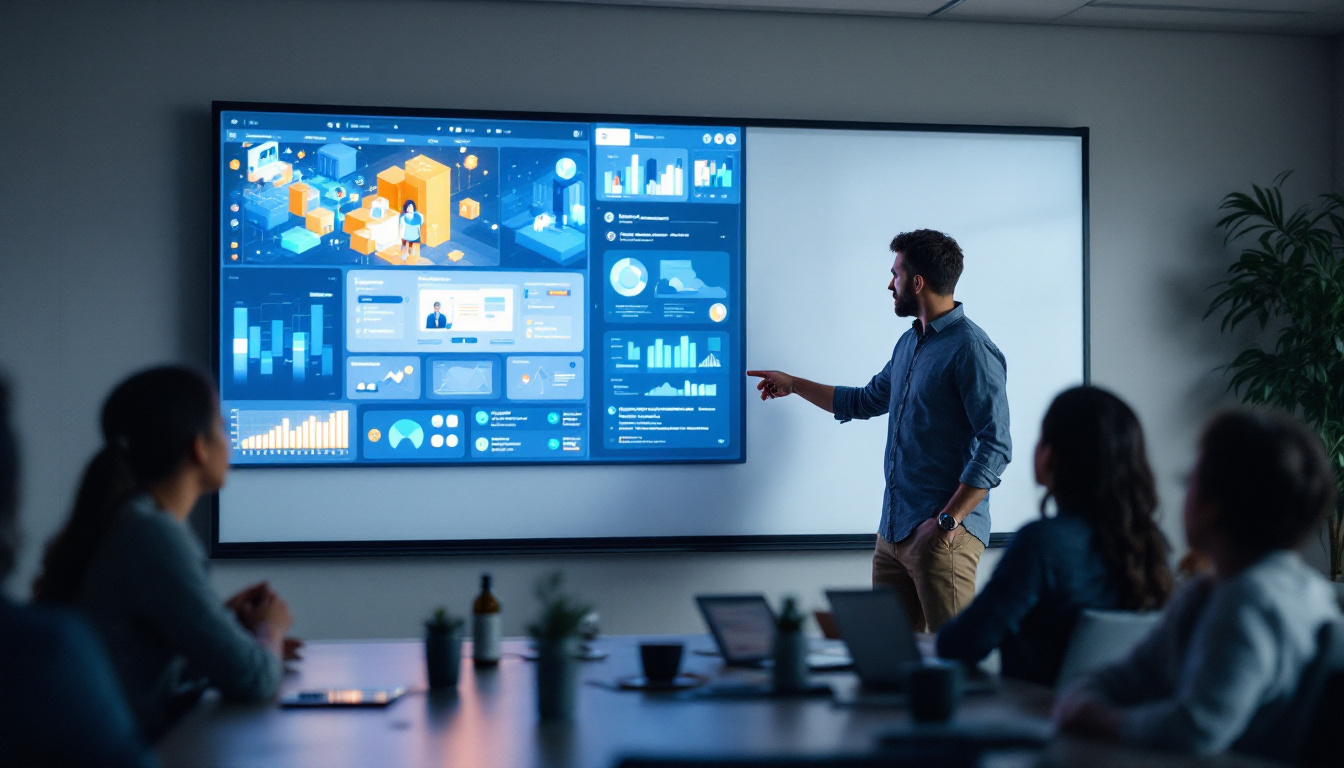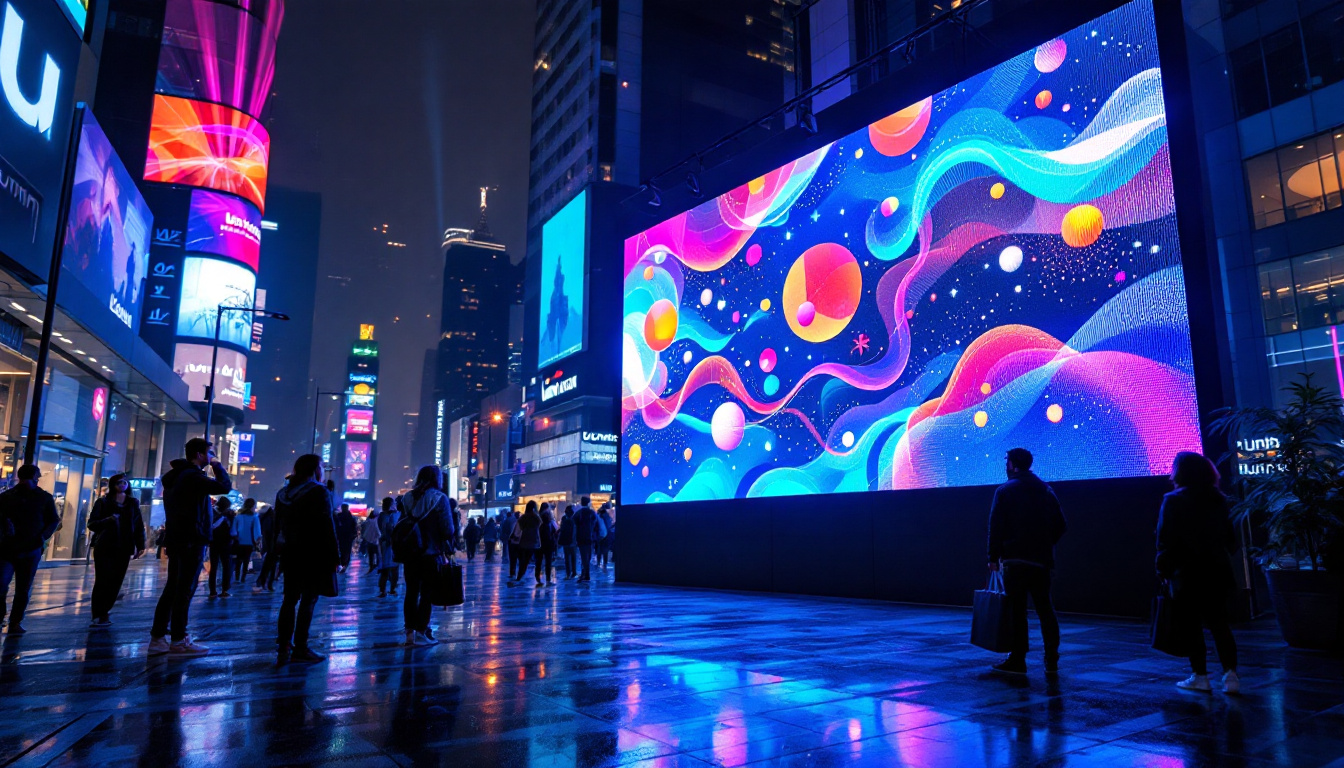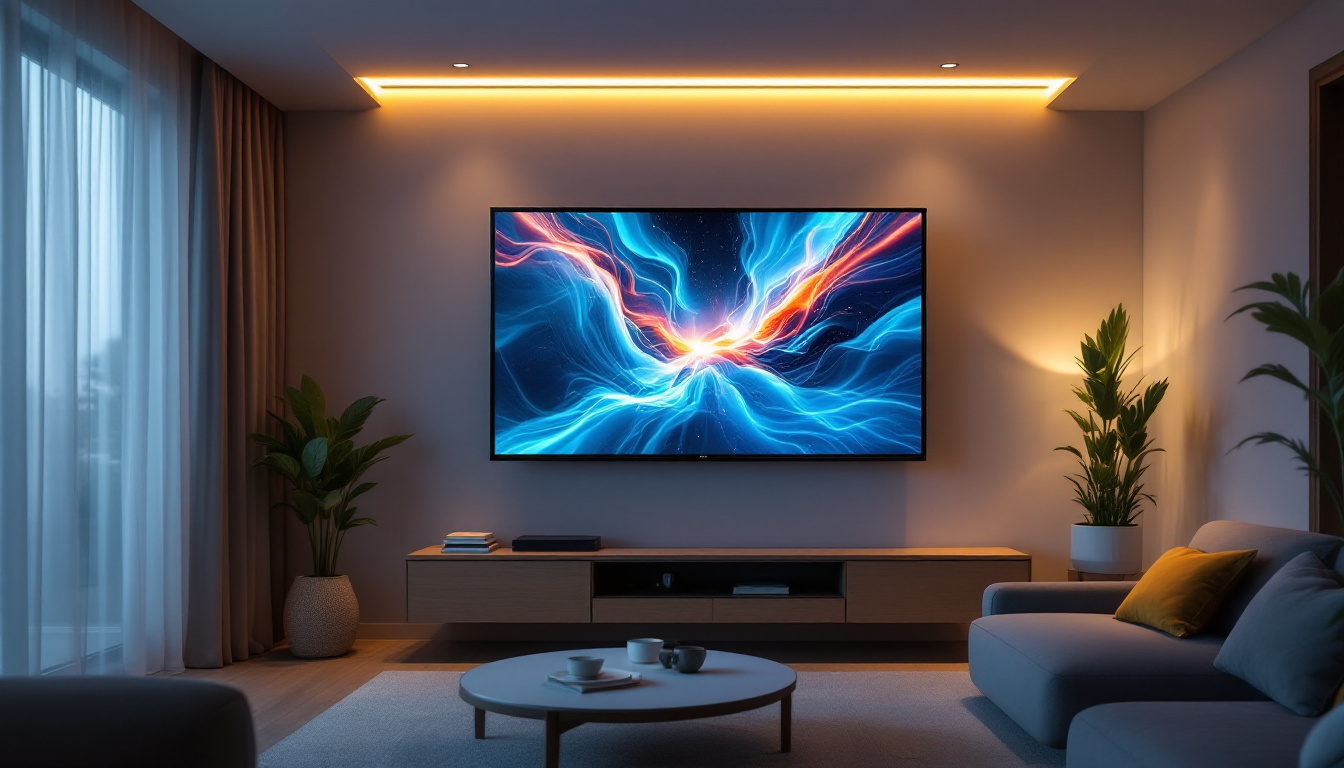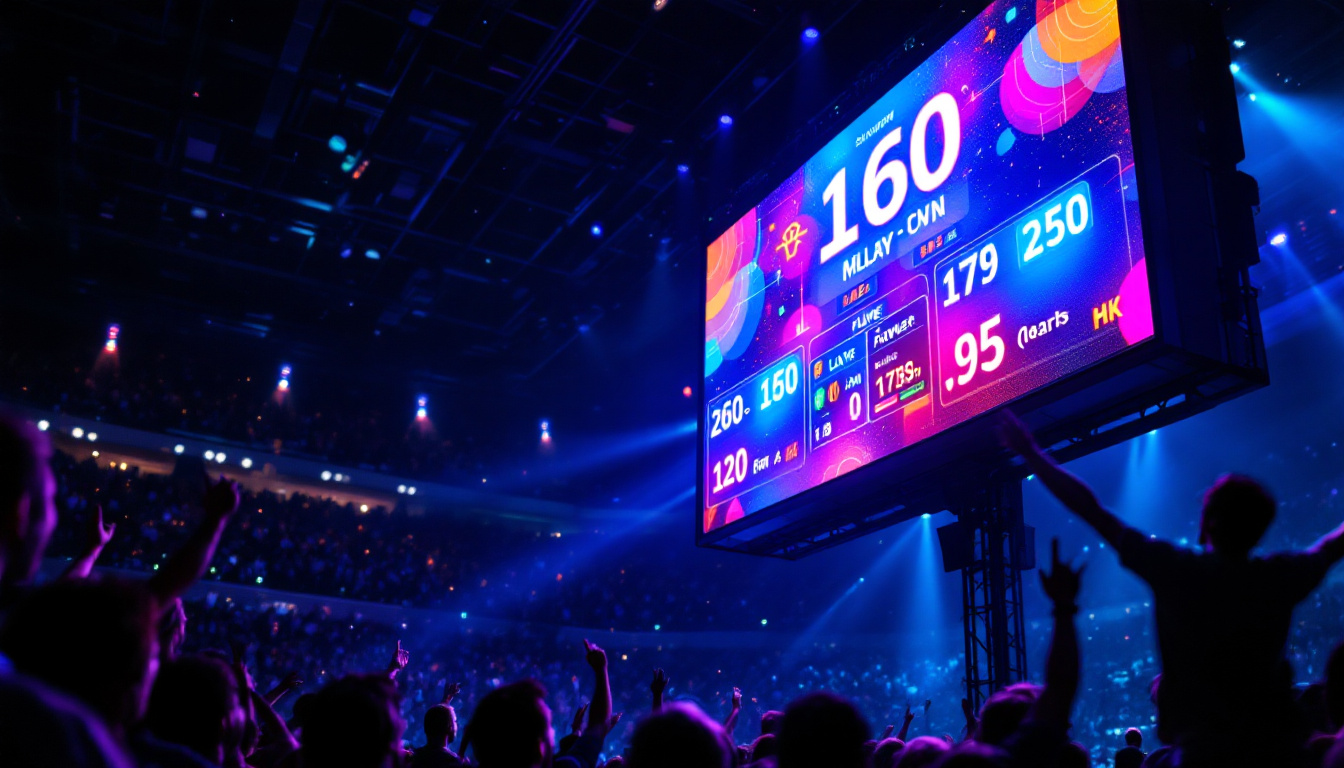In today’s fast-paced digital world, advertising has evolved beyond traditional print and static billboards. One of the most transformative innovations in this space is the rise of LED displays. These vibrant screens are not only eye-catching but also versatile, making them a preferred choice for advertisers looking to capture attention in crowded environments. This article delves into the intricacies of screen advertising, focusing specifically on LED displays, their advantages, applications, and future trends.
Understanding LED Displays
LED, or Light Emitting Diode, displays are a type of flat panel display technology that uses LEDs to produce images and videos. Unlike traditional displays that rely on liquid crystals or cathode ray tubes, LED displays offer superior brightness, color accuracy, and energy efficiency. This section will explore the fundamental components and working principles of LED displays.
Components of LED Displays
An LED display is comprised of several key components that work together to create stunning visuals. The primary elements include:
- LED Modules: These are the building blocks of the display, consisting of multiple LEDs arranged in a grid. Each module can be individually controlled to produce various colors and brightness levels.
- Control System: This system manages the content displayed on the screen. It allows advertisers to upload videos, images, and animations, ensuring that the right message is shown at the right time.
- Power Supply: LED displays require a reliable power source to function efficiently. The power supply must be capable of delivering the necessary voltage and current to each LED module.
How LED Displays Work
The operation of an LED display is based on the principles of light emission and color mixing. Each pixel on the screen consists of red, green, and blue (RGB) LEDs. By adjusting the intensity of each color, a wide spectrum of colors can be produced. When these colors blend together, they create the images and videos that are displayed.
The control system plays a crucial role in this process. It processes the incoming data and translates it into signals that dictate how each LED should behave. This allows for dynamic content that can change in real-time, making LED displays particularly effective for advertising.
In addition to their vibrant visuals, LED displays are also known for their durability and longevity. Unlike traditional display technologies, which may suffer from burn-in or degradation over time, LED displays can maintain their performance for years with minimal maintenance. This resilience makes them a popular choice for outdoor advertising, where they are exposed to various weather conditions and require consistent performance without frequent replacements.
Furthermore, the versatility of LED displays extends beyond mere advertising. They are increasingly being utilized in sports arenas, concert venues, and public events to enhance the viewer experience. With the ability to display live feeds, scores, and interactive content, LED displays contribute to a more engaging atmosphere for audiences. As technology continues to evolve, we can expect even more innovative applications for LED displays in diverse fields such as education, healthcare, and transportation.
Advantages of LED Displays in Advertising
The adoption of LED displays in advertising comes with a myriad of benefits that make them stand out compared to traditional advertising methods. Here are some of the most significant advantages:
High Visibility and Impact
One of the most compelling reasons for using LED displays in advertising is their high visibility. The brightness of LED screens ensures that content is easily seen even in direct sunlight. This feature is particularly advantageous for outdoor advertising, where competition for attention is fierce.
Moreover, the vibrant colors and dynamic content can create a lasting impression on viewers. The ability to showcase videos and animations adds an element of engagement that static displays simply cannot match.
Cost-Effectiveness
While the initial investment in LED technology can be higher than traditional displays, the long-term cost savings are significant. LED displays are energy-efficient, consuming less power than other types of displays. This reduction in energy costs can lead to substantial savings over time.
Additionally, the durability of LED screens means they require less frequent replacement and maintenance, further contributing to their cost-effectiveness. Advertisers can run campaigns for extended periods without worrying about wear and tear.
Flexibility and Versatility
LED displays can be used in a variety of settings, from large outdoor billboards to smaller indoor screens. Their modular design allows for customization in size and shape, making them suitable for unique installations.
This versatility extends to content as well. Advertisers can easily update their messages, switch between different campaigns, and even tailor content to specific audiences or events. This adaptability is a significant advantage in a rapidly changing advertising landscape.
Applications of LED Displays
The versatility of LED displays has led to their widespread adoption across various industries. Here are some key applications where LED displays are making a significant impact:
Outdoor Advertising
Outdoor LED displays are often seen in high-traffic areas such as city centers, highways, and stadiums. These large screens can showcase advertisements to thousands of passersby, making them a powerful tool for brand visibility.
Many outdoor displays feature advanced technology, such as sensors that adjust brightness based on ambient light conditions, ensuring optimal visibility at all times. Advertisers can also use geolocation data to tailor messages to specific demographics, enhancing the effectiveness of their campaigns.
Retail Environments
In retail spaces, LED displays serve multiple purposes. They can be used to promote products, display pricing, or even provide information about ongoing sales and promotions. The dynamic nature of LED content allows retailers to capture customer attention and drive purchases.
Furthermore, interactive LED displays are becoming increasingly popular. These screens can engage customers through touch or gesture controls, creating an immersive shopping experience that encourages exploration and interaction with the brand.
Events and Entertainment
LED displays play a crucial role in the events and entertainment industry. Concerts, festivals, and sporting events often utilize large LED screens to enhance the audience experience. These displays can broadcast live feeds, highlight performances, and provide information about the event in real-time.
Moreover, the ability to create stunning visual effects using LED technology can elevate the overall atmosphere of an event, making it more memorable for attendees. This has led to an increased demand for LED displays in the event management sector.
Challenges and Considerations
While LED displays offer numerous advantages, there are also challenges and considerations that advertisers must keep in mind. Understanding these factors is essential for making informed decisions about screen advertising.
Initial Investment
The upfront cost of acquiring LED display technology can be a barrier for some businesses. High-quality LED screens can be expensive, and smaller companies may find it challenging to justify this investment, especially when budgets are tight.
However, it is essential to consider the long-term benefits and potential return on investment. As previously mentioned, the energy savings and reduced maintenance costs can offset the initial expenditure over time.
Content Management
Effective content management is crucial for the success of LED advertising. Advertisers must ensure that their messages are engaging, relevant, and updated regularly. Failure to do so can lead to viewer fatigue and reduced effectiveness.
Additionally, the control systems used to manage content can be complex, requiring trained personnel to operate them effectively. Businesses must invest in training and resources to maximize the potential of their LED displays.
Regulatory Compliance
In many regions, there are regulations governing outdoor advertising, including restrictions on brightness levels, content, and placement. Advertisers must navigate these regulations to avoid fines and ensure compliance.
Understanding local laws and working with regulatory bodies can help advertisers create effective campaigns while adhering to legal requirements. This diligence is essential for maintaining a positive brand image and avoiding potential legal issues.
The Future of LED Displays in Advertising
The future of LED displays in advertising looks promising, with ongoing advancements in technology and increasing demand for dynamic content. Several trends are emerging that are likely to shape the landscape of screen advertising in the coming years.
Integration with Augmented Reality (AR)
As augmented reality technology continues to evolve, the integration of AR with LED displays presents exciting possibilities. Advertisers can create immersive experiences that blend digital content with the physical world, engaging consumers in new and innovative ways.
For example, a retail store could use AR-enabled LED displays to allow customers to visualize how products would look in their homes, enhancing the shopping experience and driving sales.
Smart Technology and IoT
The Internet of Things (IoT) is revolutionizing various industries, and advertising is no exception. Smart LED displays equipped with sensors and connectivity features can gather data on viewer behavior, allowing for more targeted and effective advertising campaigns.
These smart displays can analyze foot traffic, monitor engagement levels, and adjust content in real-time based on audience demographics. This data-driven approach can significantly enhance the effectiveness of advertising efforts.
Sustainability and Eco-Friendly Practices
As environmental concerns continue to grow, there is an increasing demand for sustainable advertising solutions. LED displays are already more energy-efficient than traditional options, but the industry is moving towards even greener practices.
Future developments may include the use of recyclable materials, solar-powered displays, and energy-efficient manufacturing processes. Advertisers who prioritize sustainability will not only contribute to environmental preservation but also appeal to eco-conscious consumers.
Conclusion
LED displays have transformed the landscape of screen advertising, offering unparalleled visibility, flexibility, and engagement. As technology continues to advance, the potential for LED displays in advertising will only grow, paving the way for innovative campaigns that capture the attention of audiences worldwide.
While challenges exist, the benefits of LED displays far outweigh the drawbacks. By embracing this dynamic technology, advertisers can create impactful experiences that resonate with consumers and drive brand success. As the industry evolves, staying informed about trends and advancements will be crucial for businesses looking to leverage the power of LED advertising effectively.
Discover LumenMatrix’s Innovative LED Display Solutions
Ready to elevate your advertising strategy with the latest in LED display technology? LumenMatrix is at the forefront of creating immersive visual experiences that captivate and engage. From versatile Indoor and Outdoor LED Wall Displays to specialized solutions like Vehicle LED Displays, LED Sports Displays, and even Custom LED Displays, we have the cutting-edge technology to bring your brand to life. Embrace the future of visual communication with LumenMatrix and transform how you connect with your audience. Check out LumenMatrix LED Display Solutions today and start creating unforgettable visual narratives for your business.

